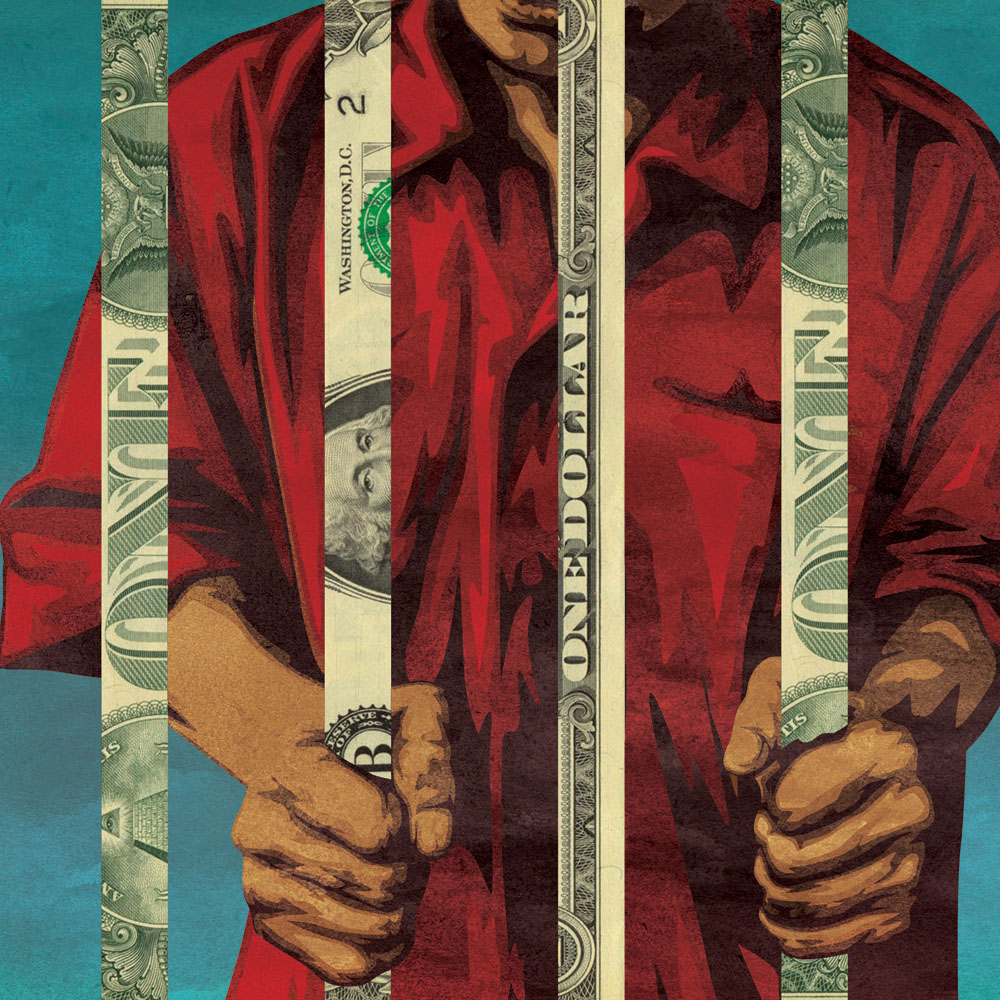USA // Covid-19: prison industry threatens thousands~ 7 min

The U.S. criminal justice system has almost 2.3 million people in 1833 state prisons, 110 federal prisons, 1772 juvenile prisons, 3134 local prisons, 218 immigrant prisons and 80 Native American prisons. Then, there’s the military prisons, civil commitment centers, state psychiatric hospitals and prisons in the U.S. overseas territories.
These numbers come to us through a report produced in March of this year by the Prison Policy Initiative, a platform focused on reporting the damage caused by the racial segregation and mass criminalization policies implemented by the United States.
For decades, the “war on drugs” was used as a pretext by presidents like Richard Nixon, Ronald Reagan and Bill Clinton to continue the policies of racial segregation (Jim Crow laws) applied in the late 19th century after slavery abolition; and to condemn thousands to social isolation. Policies focused on persecuting the African-American population and which have spread over the years to the Latin and Native American populations. Currently, 60% of the 2.3 million people living in prison are African-American (40%), Latino (19%) and Native American (1%). All from vulnerable socioeconomic contexts.
The “war on drugs” was fought with specific legal frameworks that facilitated the detention of the poorest populations in order to perpetuate racial segregation while feeding the business of prisons in the U.S. Much of the regulation that contributed most to the mass imprisonment, which intensified in the 1970s, was drawn by the American Legislative Exchange Council (ALEC). Created in 1973 by political conservatives and legislators, this council has dedicated itself to creating draft laws that have benefited certain corporate interests in various areas over the past decades; from agriculture to health, education, labor, among others.
Dealing with prisons, weapons, crime and immigration, ALEC has developed draft laws with legal architectures designed to encourage arrests. Bills which have been presented to several governors who decided to sell themselves to the corporate lobby in exchange for the approval of these projects in their Federal States. The growing number of prisoners, fostered by the new regulations, has increased the profits of corporations dedicated to the prison industry, which provide everything from meals to the (useless) health insurance assigned to each new prisoner entering the system.
There is also the matter of forced labor, with inmates being exploited at zero cost or being paid between 0,86 cents to 3 dollars per day. For years, the exploitation of prisoners has fed, for example, the production of the well-known Victoria Secrets brand of clothing – among many other brands.
The outcome is there to be seen. The American prison system has grown and prisoners live crammed into buildings without the minimum conditions of safety and hygiene. Over 555 000 people are being held without trial or sentence. Unable to pay the $10 000 bail bonds required for release and unable to bear the costs of a trial, these people are induced to avoid trial under the threat of being sentenced to several years of imprisonment. What the justice system tells these people is that it’s better to serve the time assigned to them at the time of arrest than to try to defend themselves.
Then there’s parole. One third of the population in prison has been detained for mostly unproven parole violations. As many others in pre-trial detention. Immigrants arrested for lack of documents. And refugees with legitimate asylum claims who are crowded into prisons while waiting for a response that never comes.
77 million people have criminal records. And 113 million adults have a direct family member who has been through prison. Once arrested, the right to vote is lost and access to work or decent housing becomes practically impossible; in what is a system that condemns these people to eternal social isolation.
In times of Covid-19 pandemic
The Covid-19 pandemic has increased insecurity within prisons. The lack of conditions and the risk of contagion generated a wave of protests throughout the prison system. The Federal Department of Prisons has not yet released any plans of action to protect prisoners. Private companies hired to run some of the prisons don’t seem too concerned either. Family visits have been suspended, further isolating those living this crisis behind bars, but nothing has been done to reduce the risk of transmission within prisons. The entire prison population is in danger.
In particular, the 14 000 migrant children held by Immigration and Customs Enforcement (ICE) or the Refugee Regularization Service (ORR) are at risk. The U.S. District Court is considering their release, but so far nothing has been done. A few dozen demonstrators have protested outside the prisons where these children are staying, demanding their release.
Meanwhile, the risk of Covid-19 contagion has led to several strikes. Hunger strikes and strikes against the labor exploitation to which inmates are subjected inside the establishments. They demand the immediate release of prisoners over 50 years of age, with serious health risks, prisoners who have suffered violations of their probation and with less than a year’s sentence to serve.
The Essex County prison in New Jersey, where there are many immigrants held by ICE, was the first to go on strike. On hunger strike and on strike at work inside the prison. The conditions in this prison, which were already quite degrading before the arrival of the pandemic, have become even worse and the inmates are now calling for the immediate release of everyone in it.
Prisoners in Hudson County, New Jersey – among them several ICE detainees – have also gone on strike. They demand basic personal care items, such as soap and toilet paper. They denounce the lack of conditions inside the prison and the isolation to which they are subjected, without access to any information about the state of the pandemic. It is known that some of the prison guards have been contaminated, but the administration has chosen to replace them without giving any statement on the subject to the inmates.
At the Elizabeth Detention Center – run by a private company -, in New Jersey, another 40 inmates went on strike after spending 3 days without soap and without any cleaning activity inside the facility. Testimonies say that there was a pamphlet circulating inside the prison saying that no new inmates would enter due to the risk of contagion, but new inmates continue to come in from outside and they are not subject to any preventive measures.
In solidarity with the Hudson County prison strike, 45 inmates at Rikers Island prison in New York interrupted their work at the prison. The strike aimed to put pressure on the administration to take measures to prevent the transmission of Covid-19. As of this moment, about 180 people are now infected, between prisoners and officials.
There are reports from the Macomb Detention Centre in Michigan, one of the areas most affected by the pandemic, of 24 cases of Covid-19 confirmed inside the prison. No further action has been taken and the cases continue to increase.
In Ohio federal prison, the infected remain inside the facility, sharing the same space with the other inmates. The police collect the dead and put them in an off-site tent, as Aaron DeShawn Campbell reports in a video released on Facebook Live:
In an act of solidarity, a crowdfund was created to try to respond to the inmates’ needs, given the lack of response from the Federal Prisons Department to reduce the risks of this pandemic crisis. Several campaigns of collective denunciation are also being spread with calls to society to phone the various prisons, demanding the release of prisoners.
Due to the internal pressures and considering the threat of disaster inside the prisons, about 3000 prisoners have recently been released in the states of Las Vegas, New York and New Jersey. A low number compared to the 2.3 million who remain inside the American criminal justice system. Prisoners detained for non-violent offences, who have not had the right to trial, or who have been detained for minor violations (many unproven) during parole. People that by all indications should never have been caught in the trap of the American criminal justice system.




